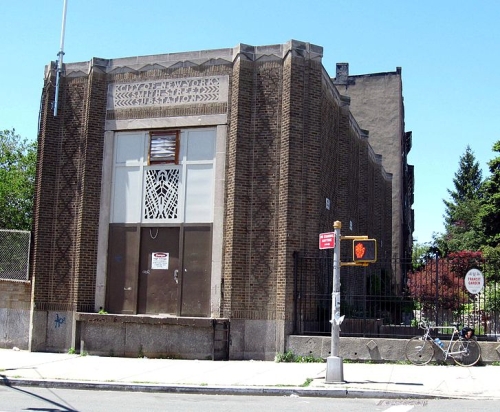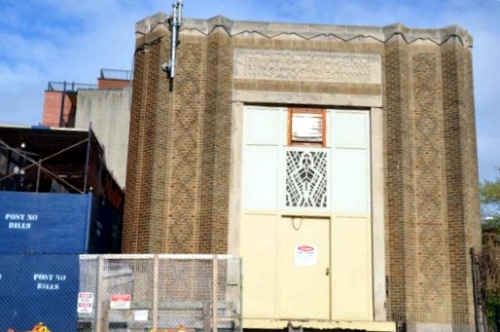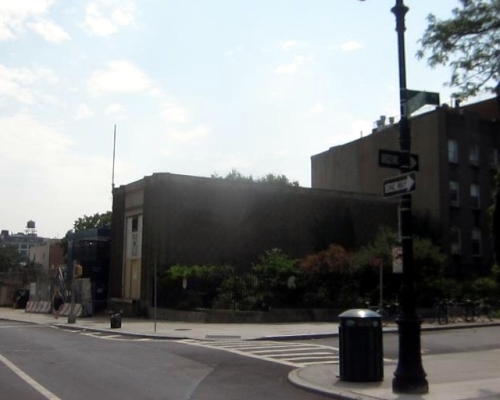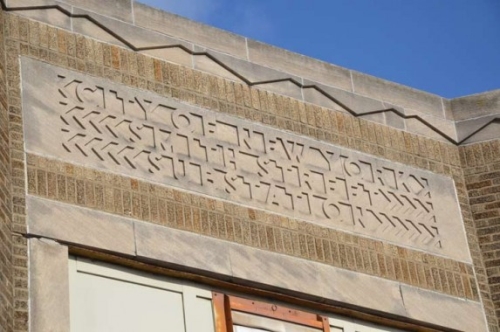Building of the Day: 136 Second Place
Brooklyn, one building at a time. Name: Smith Street Substation Address: 136 Second Place Cross Streets: Corner Smith Street Neighborhood: Carroll Gardens Year Built: Early 1930s Architectural Style: Art Deco Architect: Unknown Landmarked: No The story: The Independent Subway System, known as the IND line, is the third and last leg of our subway system, and…

Brooklyn, one building at a time.
Name: Smith Street Substation
Address: 136 Second Place
Cross Streets: Corner Smith Street
Neighborhood: Carroll Gardens
Year Built: Early 1930s
Architectural Style: Art Deco
Architect: Unknown
Landmarked: No
The story: The Independent Subway System, known as the IND line, is the third and last leg of our subway system, and joined the IRT and BMT lines in 1932, with the creation of the A train. We know the IND trains today more by their letters: the A, B, C, D, E, F and G trains. As everyone knows, the subway lines run on electricity, and substations were needed to manage the electrical systems of the lines. A substation is an electrical plant built to convert the higher voltage alternating current (AC) to lower voltage direct current (DC), which in turn makes the trains run. Power enters the substation from a central station via underground cables, and through a series of processes is converted and sent out to the third rails.
Most of the original IRT and BMT substations are gone, replaced by new ones, but many of the original IND substations are still here, and in use, in Brooklyn, Manhattan, Queens and the Bronx. All of them were designed in the Art Deco style, and unlike today, where they would all probably be exactly the same, they are all similar in materials and ornamentation, but still quite distinctively different in size, location and design.
The Art Deco period of the late 1920s and ’30s is really the last time in American architecture that ornamental features played a prominent role in building. After Deco, and the beginnings of Art Moderne, ornament was banished in favor of sleek, pared down design. That’s why this substation, like all of the rest of the remaining Deco substations, is a delight. A blank cube of a building would have been just as functional, but hardly as much fun, or as much of a surprise in the streetscape.
The building is that functional rectangle, unencumbered by unnecessary windows, although some of the larger substations have windows. But we have more: most of the IRT buildings share the same diamond and herringbone patterned brick walls, and all have the same iconic Deco font lettering carved into the limestone frames in the facade. Some also have, like the Smith Street Substation, a panel or two of ornate decorative metal grillwork. The fonts used in the stations were designed for the subway, and are used in the IND stations themselves, and on the sub and central power stations. This exact font appears nowhere else.
Art Deco is known for its linear forms, and for the use of incised relief in its ornamentation. These substations are electrical houses, literally, so it’s very fitting, and quite imaginative that the unknown designers made much of the zig zag motif that signifies lightning and electricity. The Smith Street building is one of the smaller and least ornate substations, but even here, the diamond patterned brick, grillwork and carved entryway denote the sizzling power of electricity.
All of the existing substations found throughout the city are fine examples of Art Deco design in the age of machines. You’ve probably walked past some, especially in Manhattan, without even noticing them. For a great look at the other stations, and more information, check out Gary Fonville’s piece on substations recently posted on Kevin Walsh’s Forgotten New York website. It’s really quite fascinating, and he did an excellent job capturing the details of these great functional buildings. GMAP (Photo: Jim Henderson for Wikipedia, 2008)








What's Your Take? Leave a Comment